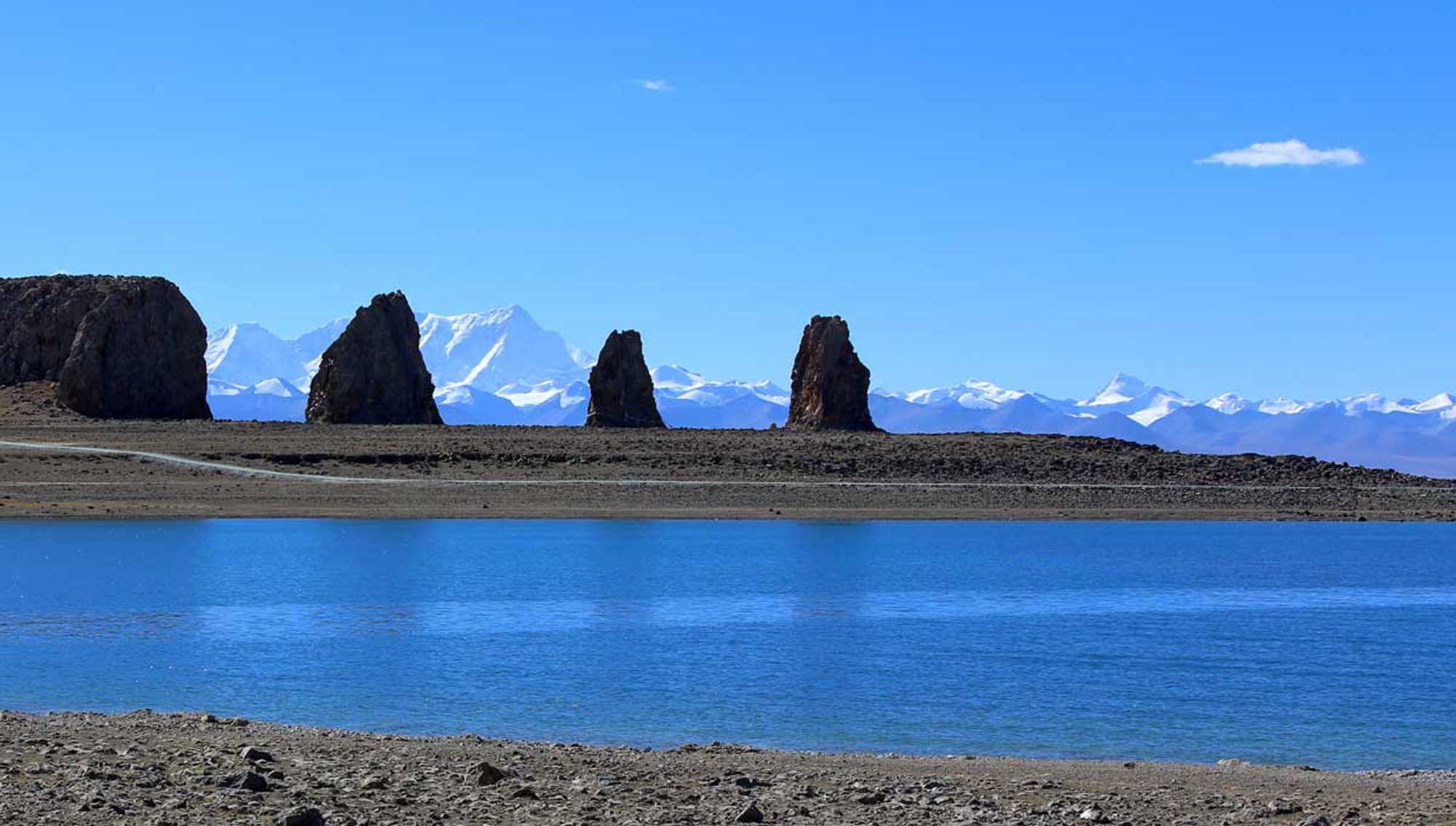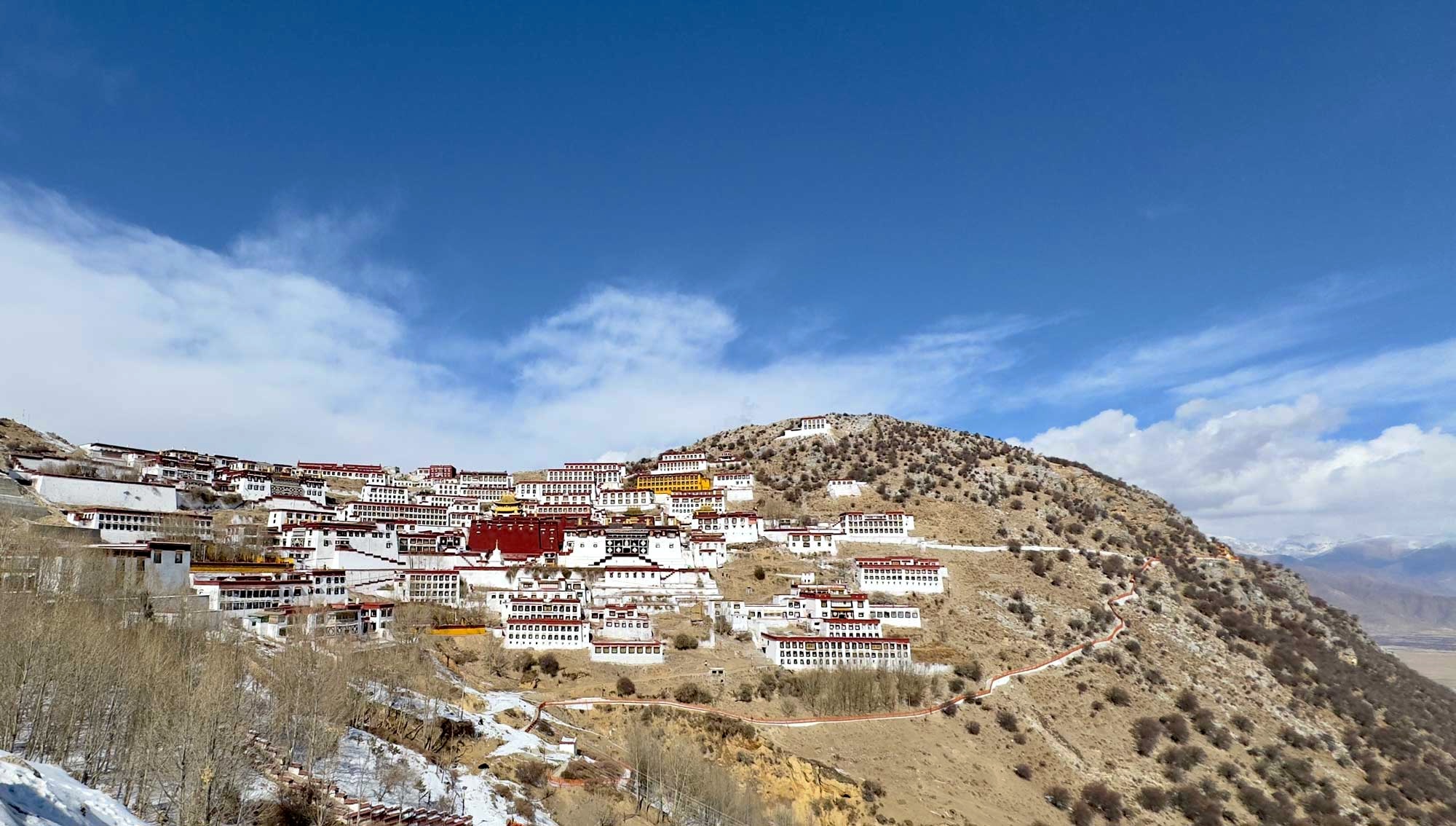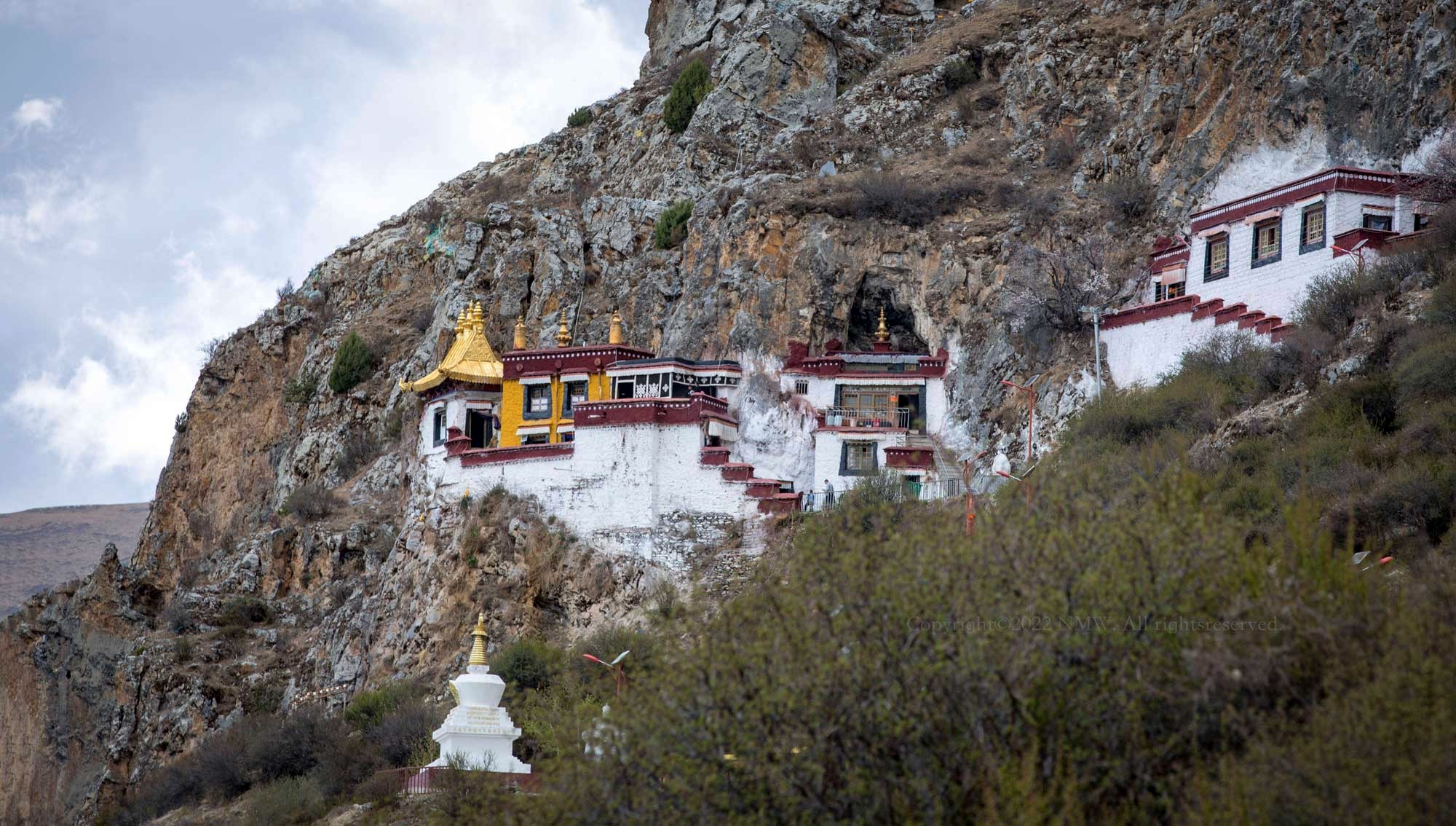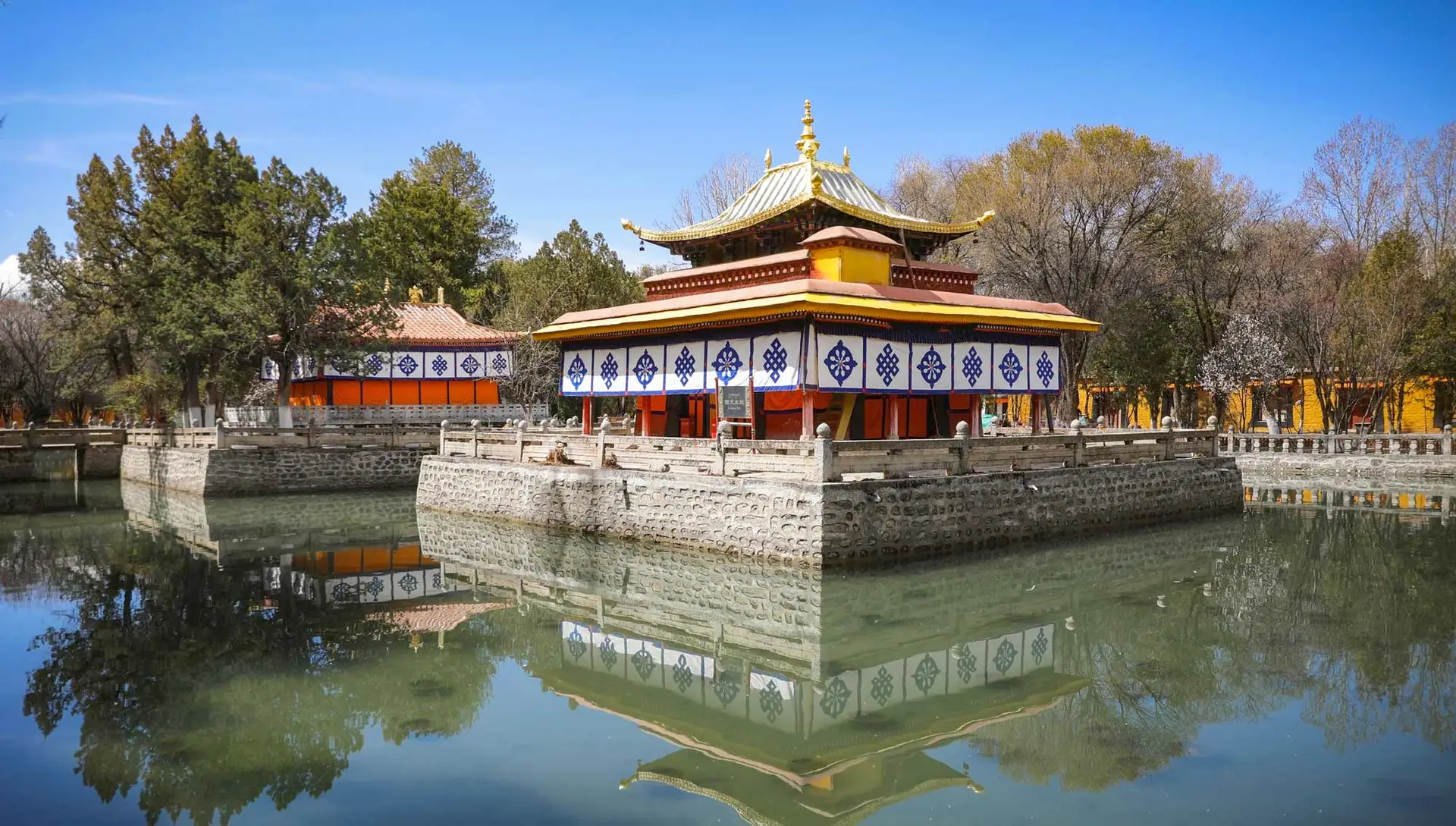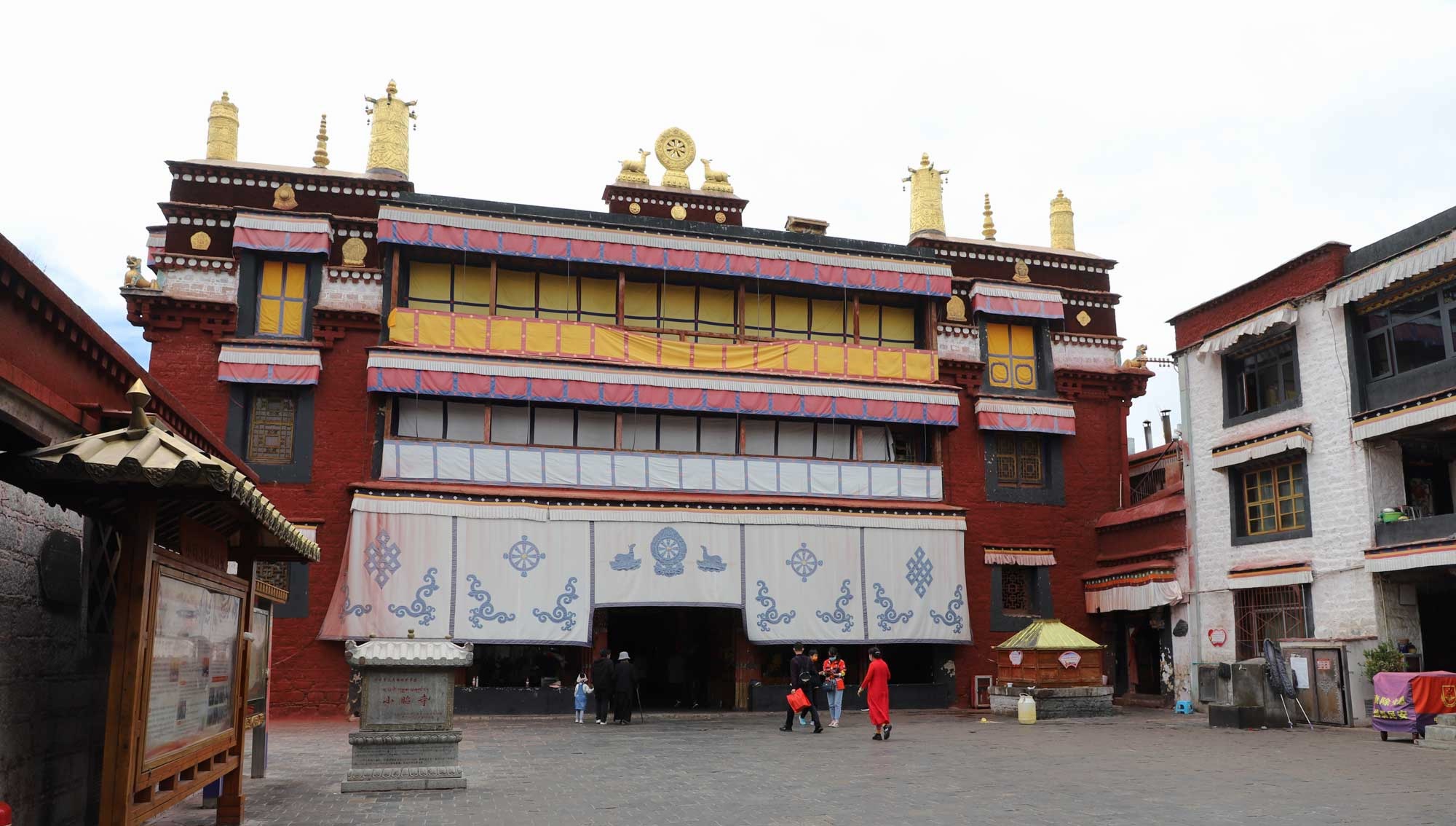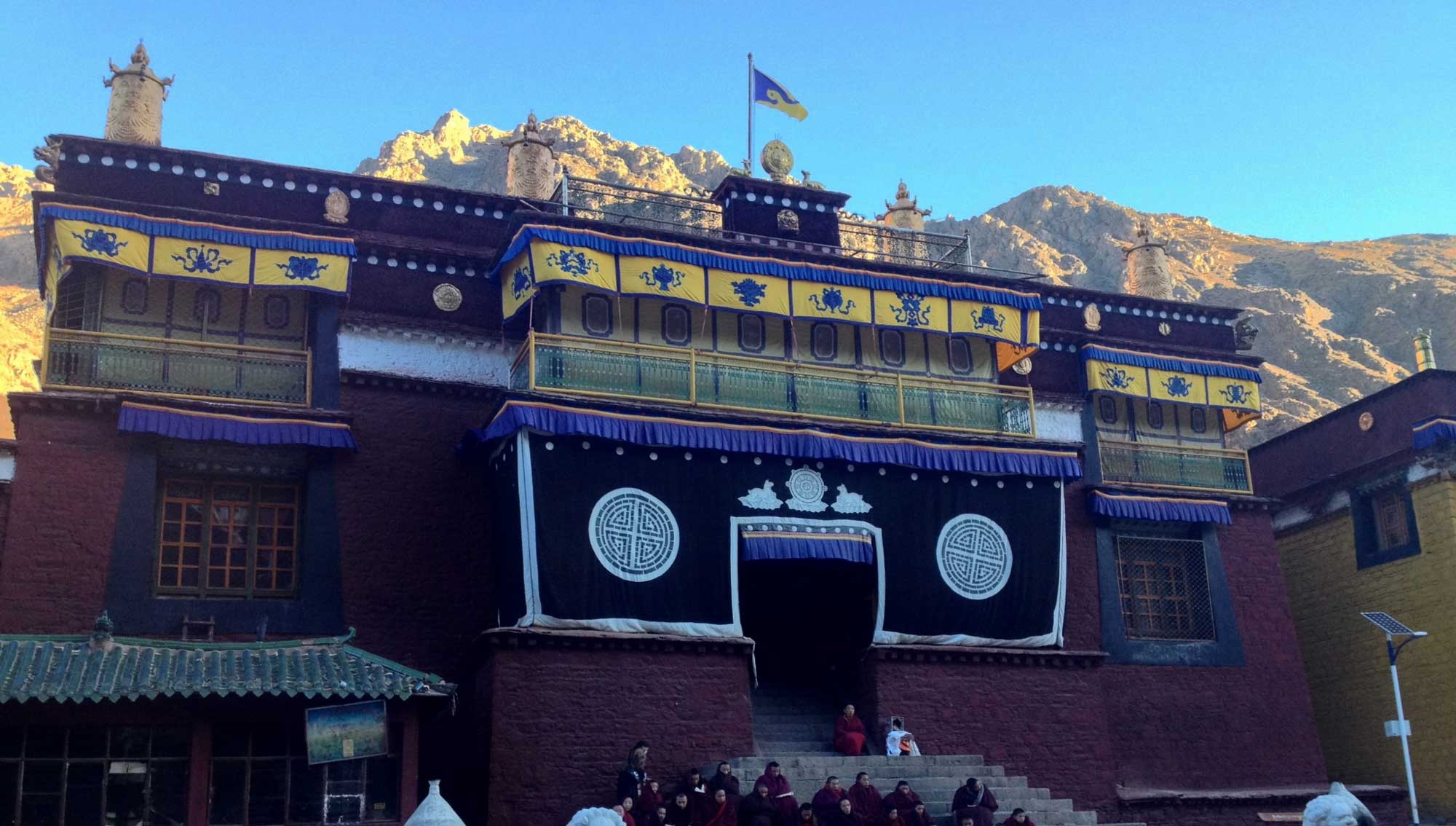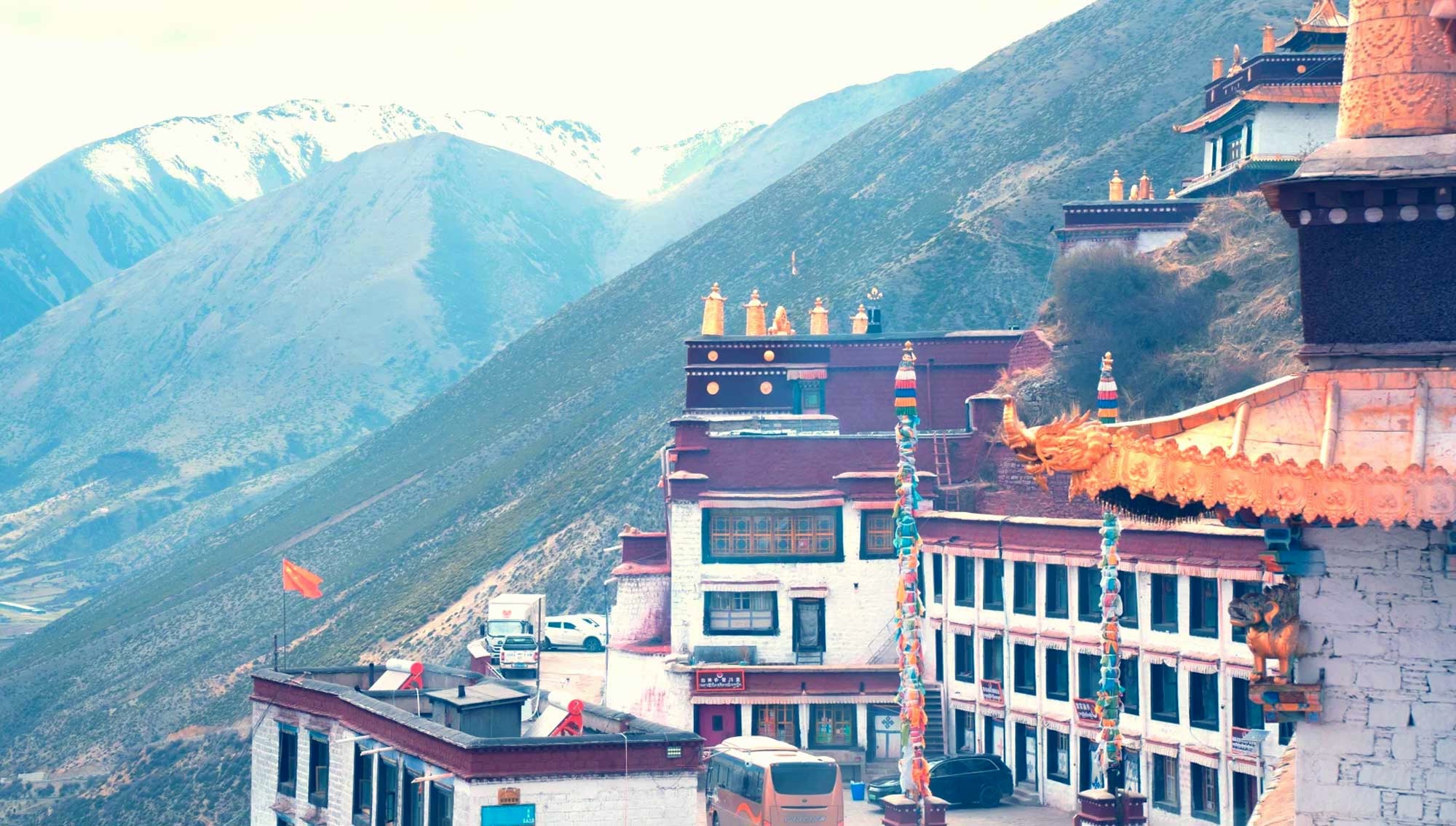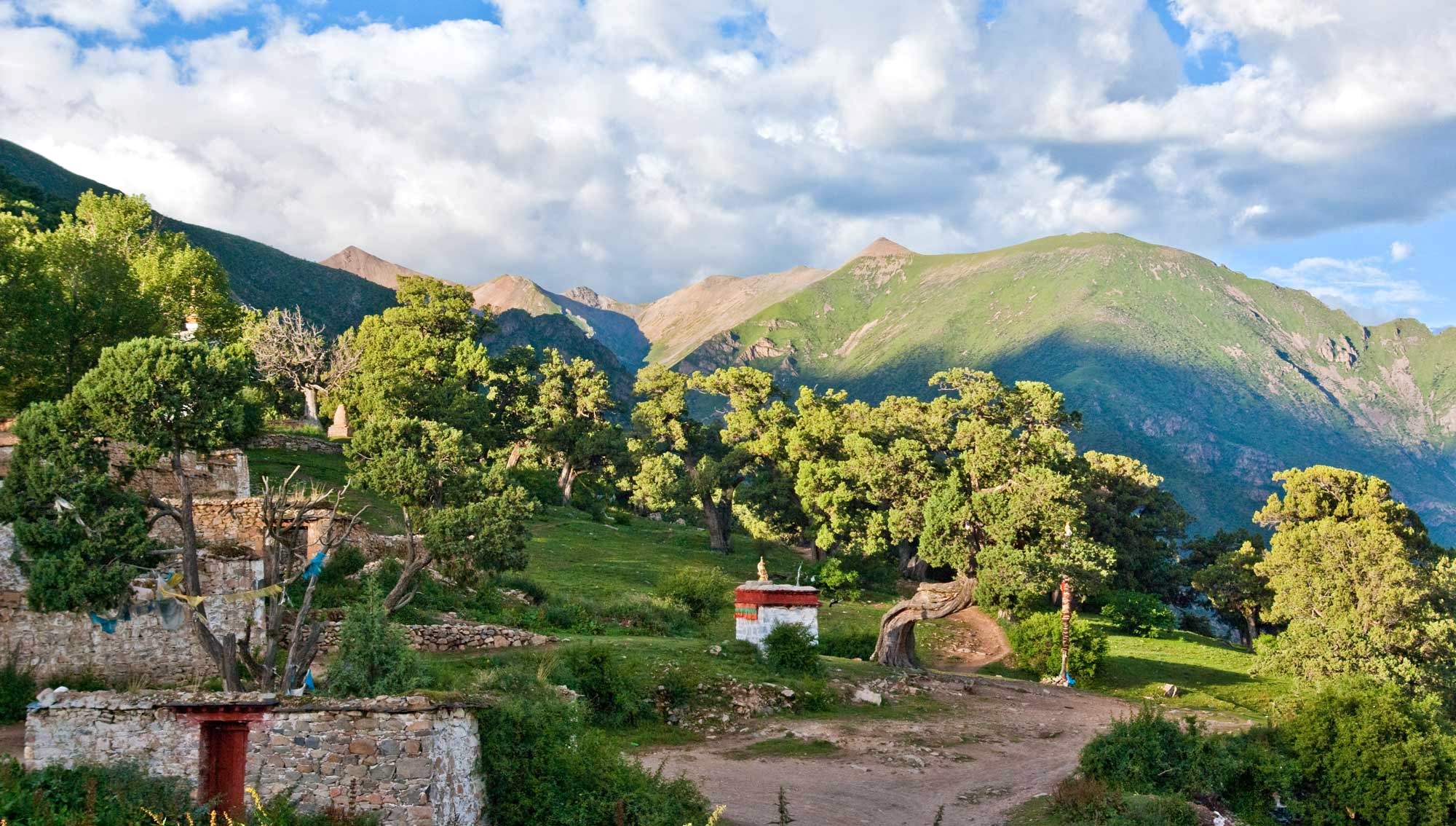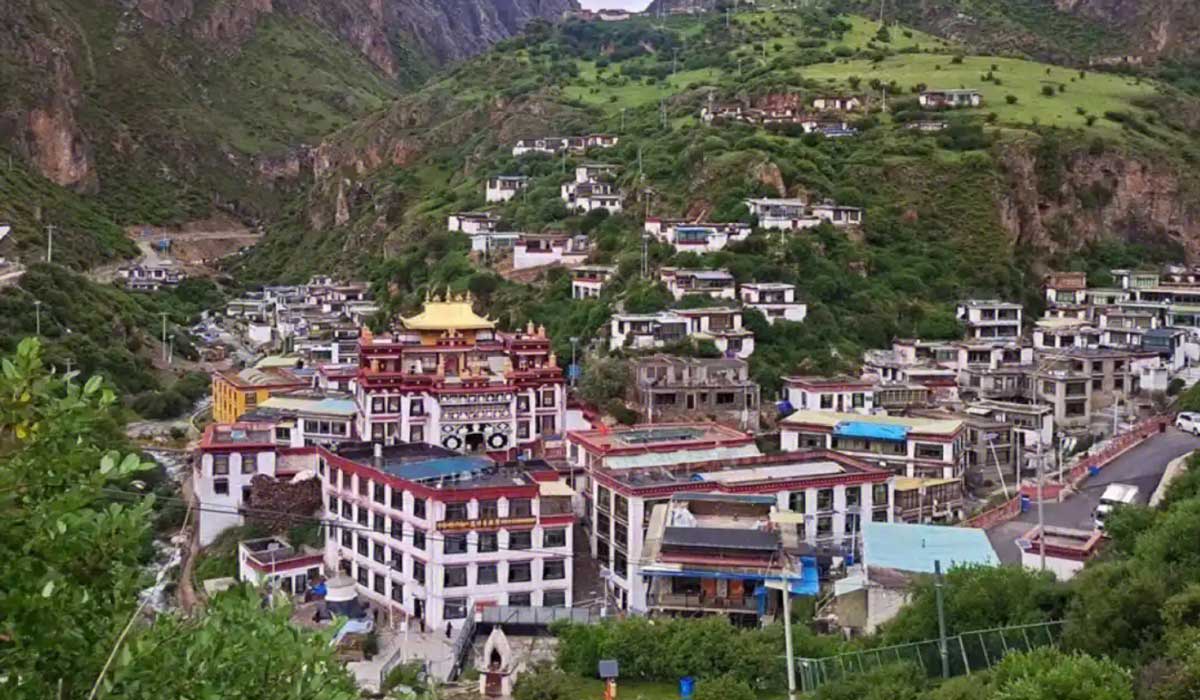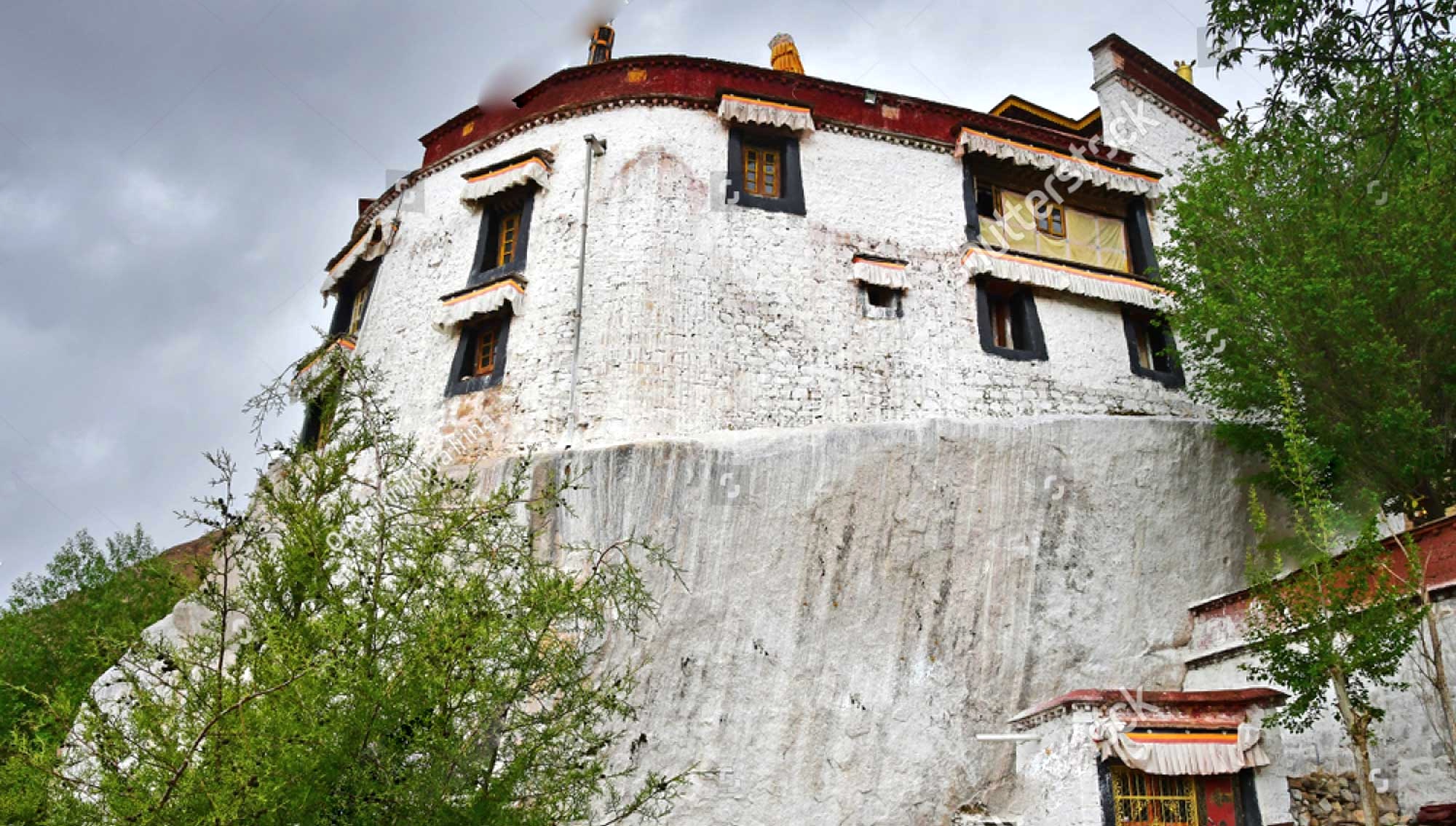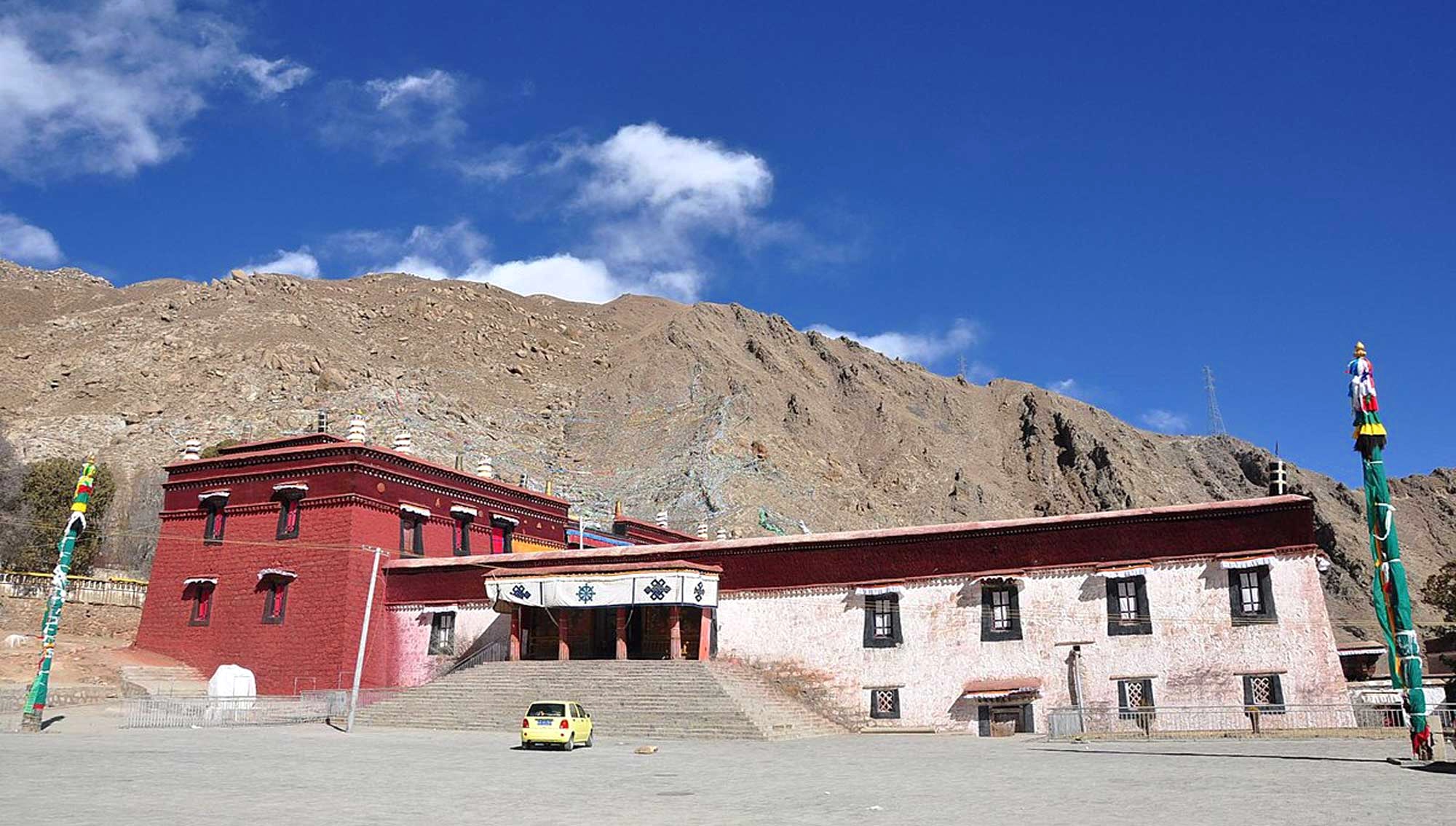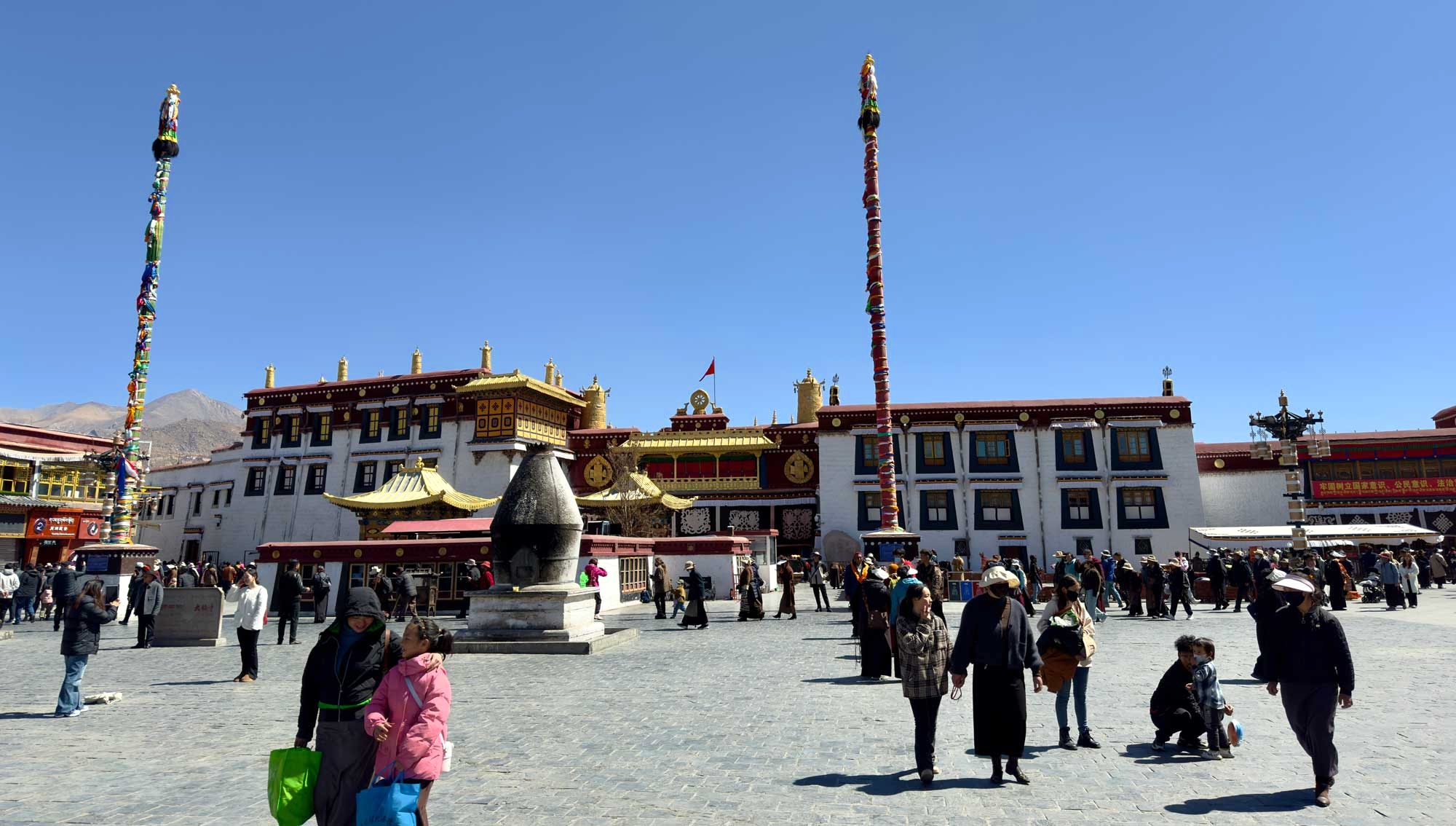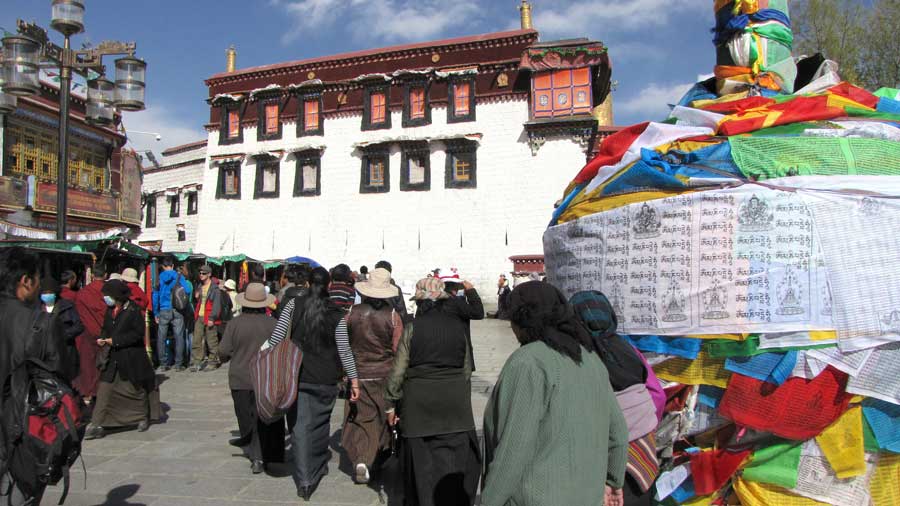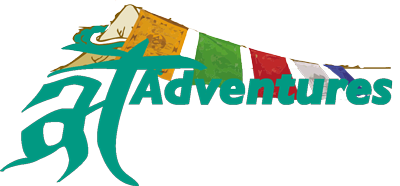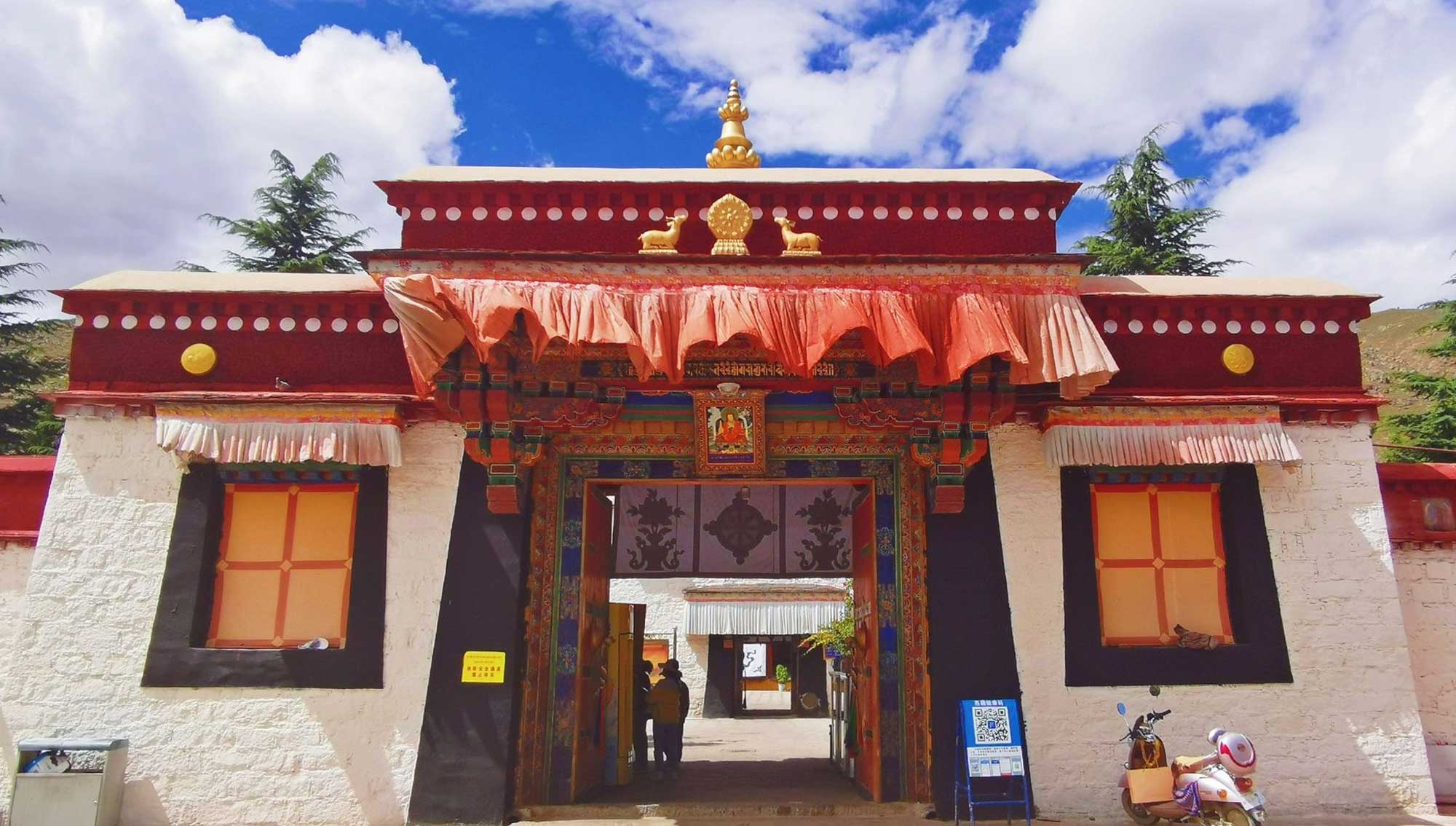
Nyethang Drolma Temple, also known as Drolma Lhakhang, is a significant 11th-century Tibetan Buddhist monastery located in Nyethang, approximately 25 kilometers southwest of Lhasa, Tibet. This temple holds immense historical and religious importance, primarily due to its association with the revered Bengali scholar and monk, Atisha (980–1054), who played a pivotal role in the second diffusion of Buddhism in Tibet during the 11th century.
Atisha, born in Bangladesh, was a prominent Buddhist teacher invited to Tibet to revitalize and reform Tibetan Buddhism. He arrived in Tibet in 1042 and spent the remaining years of his life teaching and translating Buddhist texts.Atisha's teachings laid the foundation for the Kadam school of Tibetan Buddhism. After his passing in 1054, his foremost disciple, Dromtonpa, established Drolma Lhakhang in 1055 to honor his master's legacy and house some of his relics, including his begging bowl.
Architectural Significance
Drolma Lhakhang is a remarkable example of 11th-century Tibetan architecture. The temple features a long, open porch with evenly spaced windows, leading to an interior adorned with intricate paintings and statues of Tara, the female bodhisattva to whom the temple is dedicated. The main hall houses statues of Atisha and other significant figures in Tibetan Buddhism, reflecting the temple's rich spiritual heritage.
Cultural Resilience
Despite the widespread destruction during the Cultural Revolution (1966–1976), Drolma Lhakhang remarkably survived relatively undamaged. This preservation is attributed to international appeals, notably from Bangladesh, Atisha's homeland, highlighting the temple's global cultural significance.
Visiting Nyethang Drolma Temple
Getting There:
Reaching Nyethang Drolma Temple from Lhasa is relatively straightforward:
By Car: The temple is about a 30-minute drive southwest of Lhasa. Travelers can hire a taxi or arrange a private vehicle through local tour operators.
By Bus: Public buses heading towards Qushui County pass near Nyethang. Visitors should confirm the specific bus routes and stops with local information centers, as schedules may vary.
Best Time to Visit:
The ideal periods to visit are during spring (April to June) and autumn (September to October) when the weather is mild, and the skies are clear. These seasons offer comfortable conditions for exploring the temple and its surroundings.
Visiting Hours:
While specific visiting hours may vary, temples in Tibet typically open from early morning until late afternoon. It's advisable to plan visits between 9:00 AM and 5:00 PM.
Entrance Fees:
As of the latest available information, there is no entrance fee for Nyethang Drolma Temple. However, policies can change, so it's recommended to verify current details with local sources before planning your visit.
Guidelines for Visitors:
Dress Code: Modest attire is required. Visitors should wear clothing that covers shoulders and knees as a sign of respect.
Photography: Always ask for permission before taking photographs, especially inside the temple, as some areas may have restrictions.
Behavior: Maintain a respectful demeanor. Avoid loud conversations and follow any instructions provided by the temple staff or signage.
Nearby Attractions
While visiting Nyethang Drolma Temple, consider exploring these nearby sites:
Nietang Buddha: Located approximately 11 kilometers southwest of Lhasa, this massive rock carving of Sakyamuni Buddha is a notable landmark en route to Nyethang.
Junba Village: Famous for its traditional cattle-hide boats, Junba offers a glimpse into ancient Tibetan fishing practices. Visitors can observe the craftsmanship involved in making these boats, which can carry loads up to 1,500 kilograms. China Daily
Cultural Etiquette
When visiting Tibetan temples, it's essential to observe local customs:
Circumambulation: Walk clockwise around shrines and prayer wheels.
Offerings: If you wish to make offerings, such as lighting butter lamps or donating, do so respectfully and follow temple guidelines.
Monastic Interaction: Be respectful when interacting with monks or nuns. Avoid initiating physical contact, and engage in conversations only if they are open to it.
Conclusion
Nyethang Drolma Temple stands as a testament to Tibet's rich spiritual heritage and resilience. Its historical significance, architectural beauty, and serene environment make it a worthwhile destination for those interested in Tibetan Buddhism and culture. A visit to this temple offers not only a journey into the past but also a peaceful retreat from the bustling city of Lhasa.
Attractions Nearby
Namtso Lake, a sacred Tibetan site, offers breathtaking views, crystal-clear waters, and serene high-altitude beauty…
Ganden Monastery, perched on a mountain, offers stunning views, rich history, and deep Tibetan Buddhist significance.
Drak Yerpa, a sacred Tibetan retreat, features ancient caves, stunning landscapes, and spiritual tranquility for pilgrims…
Norbulingka, the Dalai Lama’s summer palace, boasts beautiful gardens, rich Tibetan culture, and historical significance.
Ramoche Temple, a sacred Lhasa site, features intricate Tibetan architecture and revered Buddhist relics and statues…
Tsurphu Monastery, a spiritual center, offers stunning landscapes, ancient Tibetan architecture, and deep religious significance…
Drigung Til Monastery, renowned for its scenic beauty, offers profound spiritual significance and stunning Tibetan architecture…
Reting Monastery, a historic Tibetan site, features rich religious heritage, peaceful surroundings, and stunning mountain views…
Tidrum Nunnery, a peaceful retreat, offers spiritual solitude, beautiful landscapes, and a deep connection to Tibetan Buddhism…
Shugsheb Nunnery, a serene Tibetan retreat, blends spiritual tranquility, stunning views, and deep Buddhist cultural heritage…
Pabonka Monastery, one of Tibet’s oldest, offers profound spiritual significance, stunning views, and rich historical heritage.
Nyethang Drolma Temple, a sacred Tibetan site, offers spiritual serenity, beautiful architecture, and deep Buddhist significance…
Nechung Monastery, a sacred Tibetan site, is known for its oracle traditions, stunning views, and spiritual significance…
Potala Palace, Lhasa’s iconic landmark, showcases stunning architecture, rich history, and profound spiritual significance…
Jokhang Temple, Lhasa’s spiritual heart, is a sacred pilgrimage site with rich Tibetan Buddhist heritage…
Sera Monastery, Lhasa’s renowned Buddhist center, offers captivating debates, ancient teachings, and stunning Tibetan architecture…
Drepung Monastery, one of Tibet’s largest, offers rich history, stunning architecture, and deep spiritual significance…
Stroll Barkhor Street, Lhasa’s vibrant hub of culture, spirituality, bustling markets, traditional crafts, and sacred ambiance.
Offers to inspire you
5 Day-Trip to Lhasa City
Making it an unmissable destination for travelers seeking to trip to Lhasa city and explore the essence of Tibet.
7 Day-Lhasa & Shigatse Cultural Exploration
Travel through Tibet’s breathtaking landscapes.

